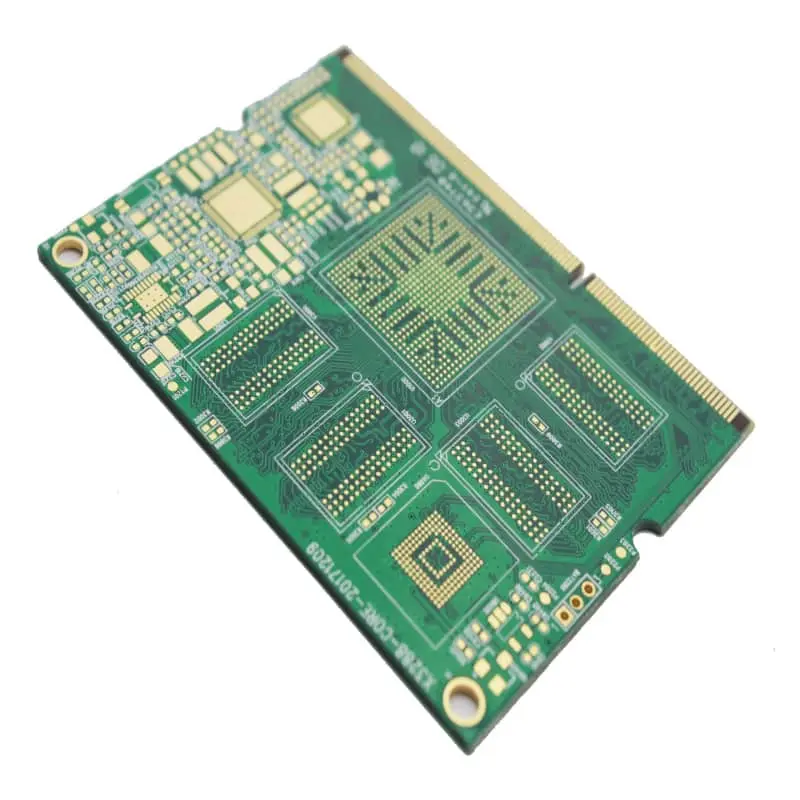Rigid flex PCB fabrication is a critical process in creating advanced electronic devices. Combining the durability of rigid boards with the flexibility of flexible circuits, rigid flex PCBs are indispensable in modern applications like aerospace, medical devices, and wearable electronics. Understanding their definition, manufacturing process, and advantages helps engineers maximize their potential in innovative designs.
What Is a Rigid Flex PCB?
Definition of Rigid Flex PCBs
A rigid flex PCB is a hybrid circuit board that integrates rigid and flexible layers into a single unit. This combination allows seamless electrical connections between rigid areas used for component mounting and flexible sections designed for dynamic bending or folding.
Structure of Rigid Flex PCBs
Rigid flex PCBs typically consist of 2 to 20 layers, depending on the application. For example, a 6 layer rigid flex PCB might include four rigid layers for structural strength and two flexible layers for dynamic interconnectivity.
Rigid Flex PCB Fabrication
Step 1: Material Selection
Fabrication begins with selecting appropriate materials. Polyimide is commonly used for flexible layers due to its excellent thermal stability and durability. The rigid layers often use FR 4, a glass reinforced epoxy laminate.
 Step 2: Lamination
Step 2: Lamination
The flexible and rigid layers are laminated together using adhesive or adhesive less bonding methods. Adhesive bonding adds thickness, while adhesive less bonding achieves thinner, more compact designs. Typical lamination pressure ranges from 150 to 250 psi, depending on material compatibility.
Step 3: Drilling and Plating
Holes for vias are drilled to connect different layers. For rigid flex PCBs, both mechanical and laser drilling are used to create vias as small as 0.1 mm in diameter. Copper plating is then applied to ensure robust electrical connections.
Step 4: Circuit Etching
Copper layers are etched using photolithography to define electrical pathways. Precision is critical during this step, especially in high-density interconnect (HDI) designs.
Step 5: Coverlay Application
The flexible layers are protected with a polyimide-based overlay, which shields the circuits while maintaining flexibility. The overlay thickness typically ranges from 12 to 50 microns.
Step 6: Final Assembly and Testing
After assembly, rigid flex PCBs undergo electrical testing and inspection to ensure functionality. Tests include impedance control, continuity, and signal integrity assessments.
Advantages of Rigid Flex PCBs
Superior Design Versatility
Rigid flex PCBs offer unmatched design flexibility. For example, a rigid flex PCB can bend at angles of up to 360° without compromising performance, making them ideal for compact devices like foldable smartphones.
Enhanced Reliability
Integration of rigid and flexible layers eliminates the need for connectors and cables, reducing potential points of failure. This results in a longer product lifespan, especially in high stress environments.
Space and Weight Savings
Compared to traditional PCBs, rigid flex designs save up to 60% in space and 30% in weight, crucial for applications like drones and medical implants.
Comparison: Rigid Flex PCBs vs. Standard PCBs
| Feature | Rigid Flex PCBs | Standard PCBs |
| Bendability | Flexible sections allow dynamic movement | Rigid, no flexibility |
| Durability | Integrated design reduces weak points | Higher failure rates at connectors |
| Applications | Ideal for compact, dynamic systems | Limited to static designs |
Applications of Rigid Flex PCBs
Aerospace and Defense
Rigid flex PCBs are widely used in aerospace systems, where reliability and compactness are essential. For instance, avionics systems use rigid flex PCBs to handle extreme temperatures and vibrations.
Medical Devices
Implantable medical devices, such as pacemakers, benefit from rigid flex PCBs due to their biocompatibility and compact design.
Consumer Electronics
Foldable phones, laptops, and wearable devices extensively use rigid flex PCB fabrication to achieve innovative designs without sacrificing performance.
Conclusion
Rigid flex PCB fabrication is a sophisticated process combining advanced materials, precise manufacturing, and robust testing. By understanding how rigid flex PCBs are made and their advantages over standard PCBs, engineers can leverage this technology to create smaller, more reliable, and more versatile electronic devices. From aerospace to consumer electronics, rigid flex PCBs are revolutionizing the way circuits are designed and applied.















